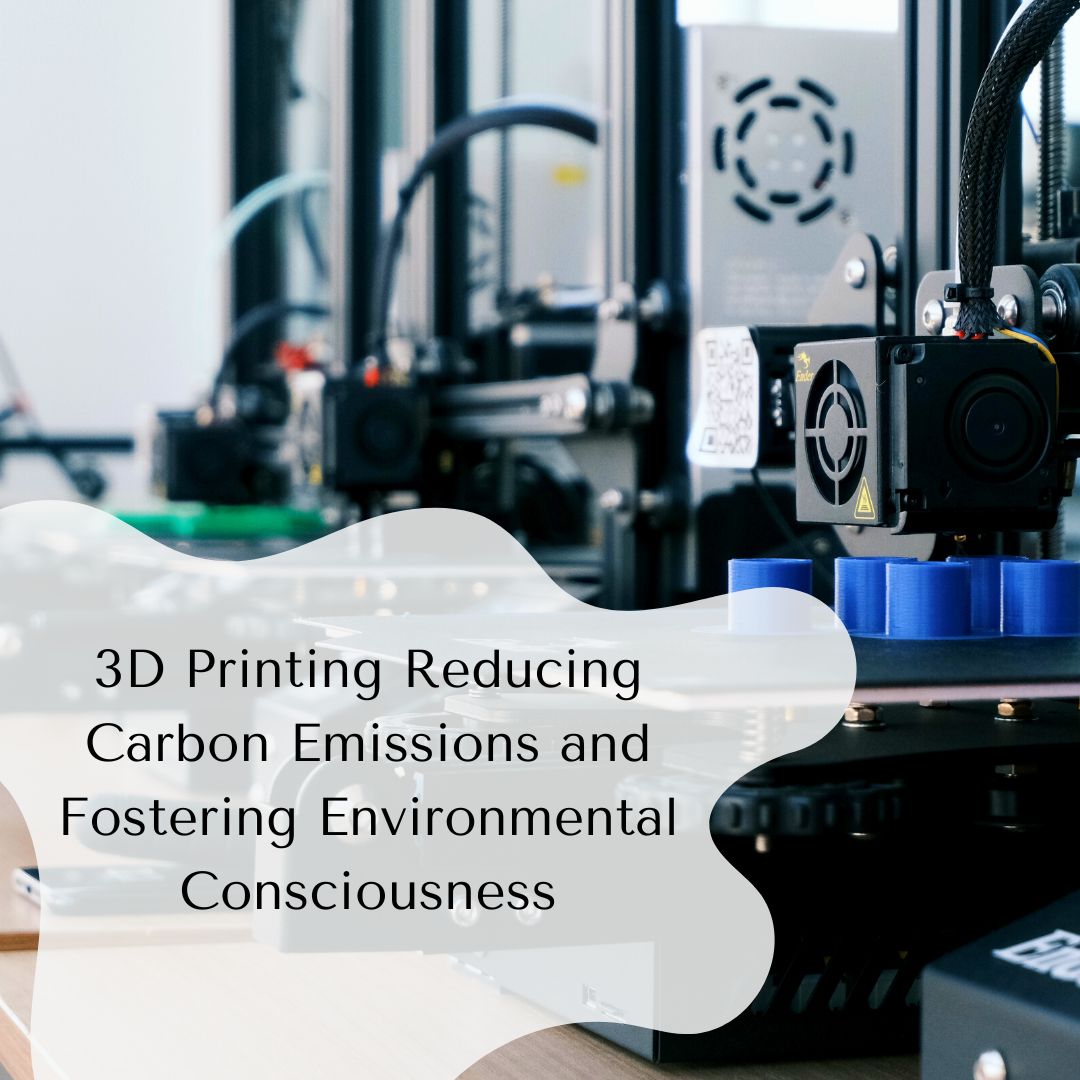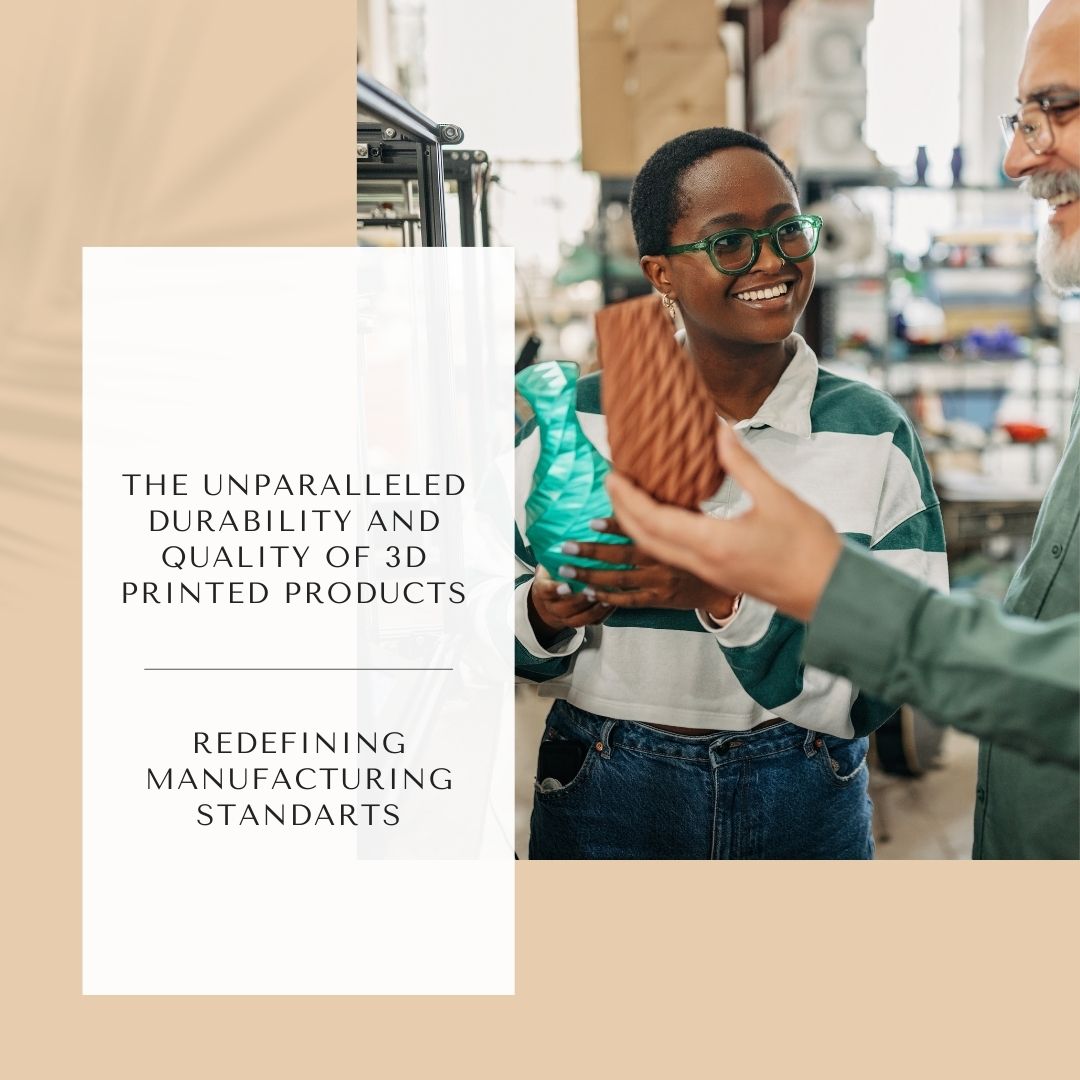As the 3D printing industry expands, it becomes increasingly important to focus on sustainable materials that prioritize the well-being of the environment and people. Moreover, undeniably the environmental impact of manufacturing is linked to climate change. The energy consumed during production and the transportation of supplies and parts throughout supply chains increase greenhouse gas emissions. In this blog post, we will discuss how 3D printing can reduce CO2 emissions in the manufacturing industry and contribute to climate change by adopting eco-friendly practices for producing products.
3D printing reduces waste by 95%
3D printing offers significant advantages when it comes to energy and material efficiency. Unlike traditional production processes, additive manufacturing minimizes waste and has a considerably lower carbon footprint. Instead of reducing materials to achieve desired shapes for items, additive manufacturing constructs objects layer by layer, resulting in less material usage. Moreover, the ability to incorporate hollow infill structures further reduces material consumption without compromising quality and overall performance. This approach allows Vulkaza to produce only what is necessary, avoiding excess inventory, which results in minimizing overall waste. Additionally, sustainable materials play a crucial role in reducing the environmental impact of 3D printing. By usage of eco-friendly alternatives, we can minimize the consumption of non-renewable resources and reduce waste generation. One of the critical aspects of sustainable materials is their biodegradability. We prioritize easily recyclable materials, contributing to a circular economy where waste is minimized and resources are reused. Hence, Vulkaza contributes to a more sustainable future by reducing energy consumption and material waste in the manufacturing process.
3D printing reduces energy consumption by 41-74%
The study by Michigan Technological University revealed that 3D printing uses 41-74% less energy to produce an object when compared to the energy-intensive process of manufacturing overseas and in addition shipping the finished product to the United States. Therefore, 3D printing requires fewer materials for production and reduces the need for long-distance shipping. By manufacturing domestically Vulkaza makes significant efforts to reduce the environmental footprint while benefiting from enhanced efficiency and sustainability. The potential of 3D printing is revolutionizing the manufacturing industry and aligning one of the most polluting industries with greener and more resource-efficient operations.
On-Demand Printing and space efficiency
Traditional manufacturing processes not only have a significant carbon footprint during the production process but also throughout the entire supply chain. The transportation and logistics involved in delivering the finished product to the final destination cause additional CO2 emissions. However, 3D printing offers an innovative solution by printing the items on-demand. By leveraging 3D printing technology, the need for multiple carbon-intensive steps in the supply chain is removed. Products can be created directly at the location where they were ordered, reducing transportation-related emissions and therefore, the carbon footprint associated with it. This not only addresses environmental concerns but also enhances operational efficiency which includes space efficiency as well. This means no more bigger areas for producing different components or assembling them together. This reduces energy usage and makes 3D printing a space-efficient solution that allows utilizing available resources while minimizing the negative environmental impact caused by traditional manufacturing processes.
At Vulkaza, we consider sustainability an ongoing journey. We continually explore new materials and technologies that further advance eco-friendly 3D printing. We strive to provide cutting-edge solutions that are both sustainable and innovative.
When it comes to 3D printing, sustainability, and safety are not just buzzwords for us. They are core values that drive our commitment to making a positive impact on the planet and people.
With our sustainable materials, you can bring your creative ideas to life while contributing to a greener future.



